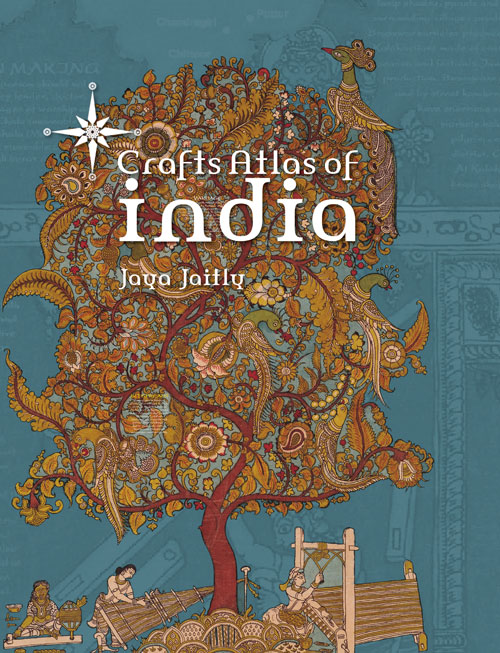|
|
The South
Asian Life & Times - SALT |
|
|||
|
Contents Feature Heritage People
Book Reviews Kaavad
Traditions of Rajasthan
- exploring
|
|
||||
|
Crafts Atlas of India
By Jaya Jaitly
HARDCOVER
500 pages; All colour
520 photographs; maps & drawings
Published by Niyogi Books
₹4500 /£90 /$145
Jaya Jaitly has been the face of Indian crafts
for several decades. Her craft maps for each state of India were a labour of
love and sheer aesthetic joy.
Crafts Atlas of India
takes the documentation of India’s rich and unmatched craft heritage to
another level. It took Jaitly 11 years to create the 500-page tome - a piece
of phenomenal research. Lavishly illustrated, the book is a lot more than
just an atlas – it gives the political and cultural history of each state
and explains how the historical path influenced the creativity, culture and
the arts of the region. It is also an encyclopaedia of different crafts
ranging from basket weaving, handlooms, metalcraft, folk art, pottery,
woodwork to the dying art of paper cutting. “The ancient art of paper
cutting called Sanjhi, practised in Mathura and Brindavan, revolves around
the culture of the temples in the area dedicated to Krishna and Radha.”
There are interesting accounts of rituals and traditions surrounding
different works of art – as the Sanjhi wall paintings in Haryana. “The
Sanjhi deity represents the nine main goddesses of Hindu tradition. They are
– Lakshmi, Kali, Parvati, Ambica, Vaishno, Gauri, Saraswati, Ramba, and
Jagdamba.” The making of the deity and its worship happens during Navratra,
the nine-day festival before Dussehra.
The
book is almost magical in its artwork by the Dastkari Haat Samiti, an
association founded by the author to document, organise and help India’s
crafts people.
|
|||||
|
Copyright © 2000 - 2015 [the-south-asian.com]. Intellectual Property. All rights reserved. |
|||||
